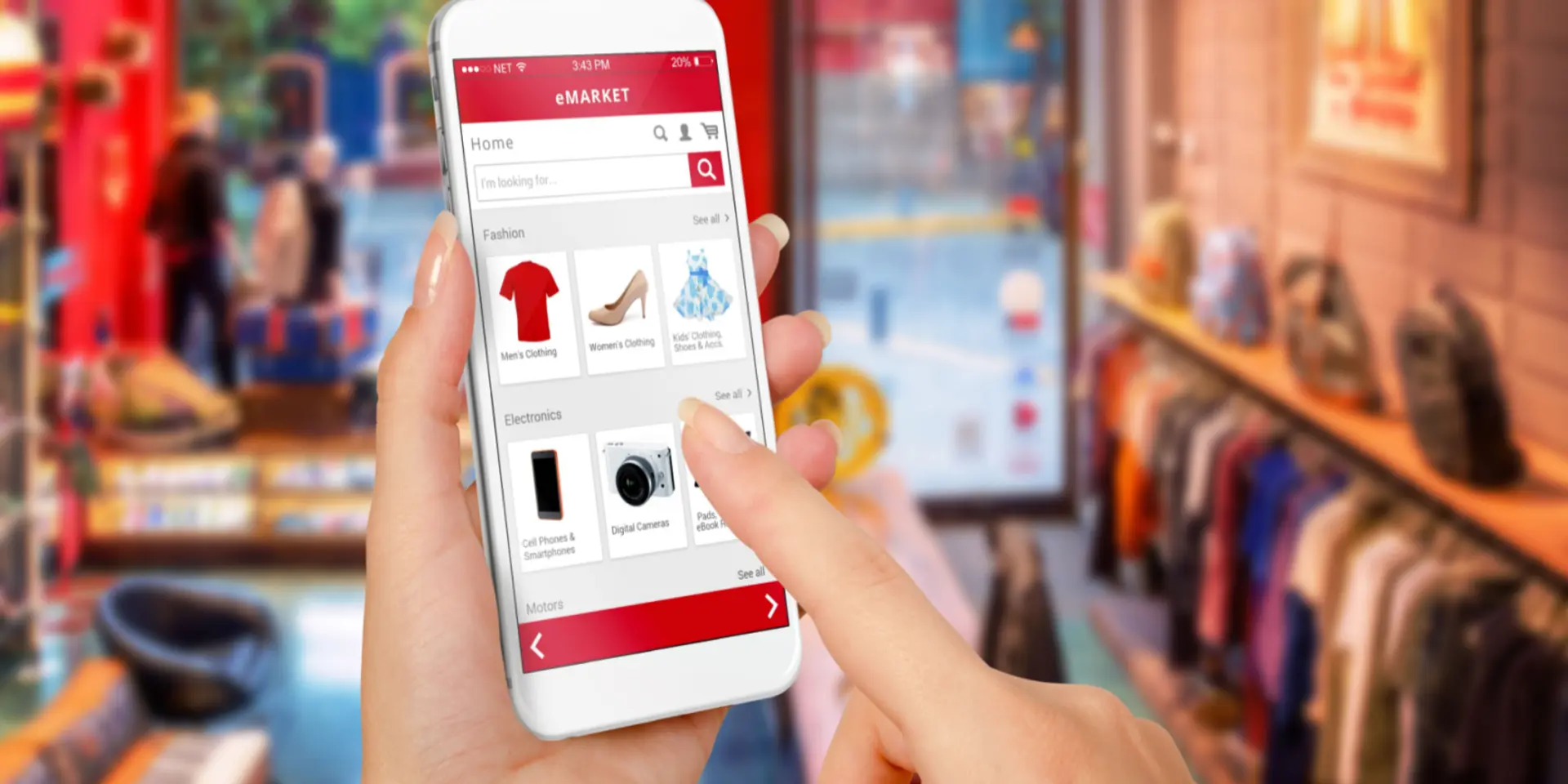How brands can adopt new-age content to grow ecommerce business
Here are five new-age content strategies that brands are adopting to drive their ecommerce growth.
FACT 1: An average individual spends 413 minutes, nearly seven hours per day, on the internet.
FACT 2: An average individual is exposed to anywhere between 6,000 and 10,000 online advertisements per day.
Fact 1 is the reason why every brand is investing massively in online content, while Fact 2 shows us how difficult it is to stand out in this frenzy.
Now, think back on the number of advertisements you saw today. How many do you remember? I am sure, the overwhelming majority of advertisements you saw were either ignored or forgotten within seconds. It is so because the human brain is designed to only pay selective attention to useful things and is unable to process the huge bombardment of content it is exposed to.
So, the question remains, despite the content chaos, how are retail markets adopting new-age content to grow their ecommerce business? How are they differentiating their brand among the 6,000+ other content pieces?
To answer this, think back on the advertisements you remember seeing today. What did they have in common?
When you look back carefully the common aspects would be relevant and consistent content that adds value to your life. These are the three pillars that capture the essence of high-quality content.
Having said that, we must also acknowledge that there has been a seismic shift in customer expectations. Customers now want proactive service, individualised interactions, and a seamless digital experience across every touchpoint.
Therefore, brands have to integrate a variety of new-age content in their content strategy to cater to changing customer behaviour.
Here are five new-age content strategies that retail brands are adopting to drive growth.
Videos
Today, every online brand has two objectives—to bring their product to life through content and to make it trustworthy.
Product explainer videos, lifestyle videos, 360-degree videos, and influencer review videos are all important components of a brand's content strategy and help in building trust and breathing life into the product.
Now, have a look at these three consumer behaviour statistics:
- Online videos make up more than 82% of all consumer internet traffic in 2022, 15 times higher than it was in 2017.
- 84% of customers said that user-generated video influenced their purchasing decision
- 90% of people cite the authenticity that videos provide as a major factor while making a purchase decision.
These stats provide conclusive proof that video is the number 1 influencing content medium today.
Since snackable reels and shorts on Instagram, YouTube, and Facebook are the preferred choices of consumers, brands must invest sufficient time, effort, and money in creating high-quality video content.
The three things that should be kept in mind while creating videos are:
- To add value by creating videos that connect emotionally with the consumer either through humour, entertainment, shock, love, or through a relevant cause aligned with the brand ethos.
- Be consistent with brand values, brand message, and frequency of delivery
- Twin focus on high-quality professional videos and micro-influencer-driven user-generated content
Product and lifestyle photoshoot
Today, customers want to zoom in on the product to the highest degree to get the experience of touching and feeling the product. The photoshoot must replicate the real-life experience of touching and feeling the texture of a fabric or the silhouette of a product.
Studies show that 78% of online shoppers want products to be brought to life with images. Therefore, brands must pay utmost attention to producing the highest quality photoshoots.
Following are the aspects that should be given due care during the shoot. The choice of each element below depends on the target customer, occasion, mood, and brand aesthetics.
- Model selection: As the face of the brand, they are a crucial part of the brand story
- Hairstyle: Elevates and defines the brand identity
- Makeup and styling: Enhances the overall look and gives the brand a nuanced flavour
- Accessories: Helps in telling a convincing story about the product and shows its utility in actual lifestyle
- Lighting: In setting the mood, tone, aesthetics, and feel of the shoot
- Angles: Helps in visualising and bringing the product to life for the customer
- Poses: Adds subliminal elements to the brand story
- Backgrounds: In showcasing the occasion and accentuating the brand feel and mood.
Creating such high-quality products and lifestyle shoots, taking into account all the factors listed above, requires a unique blend of industry knowledge, an aesthetic eye for detail, a deep understanding of customers buying psychology, and execution excellence.
High-growth brands, therefore, seek professional help to deliver high-quality photoshoots.
Creatives, infographics, and A+ content
The effort of all new-age content, including creatives, infographics, and A+, is towards making the online selling experience as good as or even better than the in-store shopping experience.
The information-seeking customer wants to study and understand the product before making a rational buying decision.
Infographics, creatives, and A+ that highlight product features, provide product comparisons, and a compelling buying proposition provide the buyer with a sense of reason and value for making a purchase.
They also help differentiate a brand, communicate the intrinsic value of the products, and help customers feel comfortable buying from you.
Creating such creatives and infographics necessitates the expertise of presenting information in a simple, easy-to-grasp manner enmeshed in an appealing visual that captures the audience's attention.
Search Engine Optimised blogs, user stories, and product descriptions
A brand’s Search Engine Results Page (SERP) ranking is a good indicator of its sales growth because organic traffic has the highest conversion rate among all forms of marketing.
Therefore, optimising product descriptions and blogs with the use of keywords becomes important in driving organic traffic to websites and marketplaces.
Blogs, user stories, and product descriptions also play a critical role in telling a compelling story about the product.
High-quality linguistics used in blogs and product descriptions help in lowering the rational barriers by appealing deep into the human psyche. It opens up the imagination and elicits an emotional response from the customer. Including mini-user stories in product descriptions also helps in giving authenticity to the product.
Besides, the product descriptions also complement and elevate the photoshoot, videos, and other content formats, while adding layers to the brand story.
Therefore, SEO blogs, user stories, and product descriptions play a crucial role in the integrated communication strategy adopted by high-growth online retail brands.
New-age augmented reality and virtual reality
With 5G on the horizon, it is only a matter of time before everyone in the ecommerce industry starts gravitating toward AR/VR content format.
The potential is enormous, the technology is already available, and there are numerous successful use cases.
AR/VR takes the customer experience to the next level altogether and makes it as close to the real in-store shopping experience as one can imagine.
Some of the existing successful use cases for AR/VR are:
- Virtual try-on of products: From apparel to glasses to how a sofa will look in your drawing room.
- Make-up styling: Allows users to upload images of their faces and virtually apply makeup and skincare products.
- Creation of AR-based store: Provide more detailed product information and enable digital interaction between products and customers. Allow customers to customise and configure product designs.
- Product demos and tutorials: Serve as a step-by-step virtual guide and allow customers to read manuals in an interactive format.
- AR games to increase shopper engagement: Leverage customised mobile apps to incentivize visitors to play and win coupons or vouchers.
Although AR/VR may still appear to be science fiction, it is already well embedded in consumer shopping habits as more than 66% of consumers in the US prefer to make purchases from sites that use AR technology.
Therefore, forward-thinking retail brands are already investing heavily in gaining the first-mover advantage in the space and providing their customers with an immersive shopping experience.
Conclusion
With customers exposed to over 6,000 advertisements per day, standing out in a sea of brands is essential for an online retail brand's survival.
However, the shift in customer expectations toward proactive service, personalised interactions, and a seamless digital experience across all touchpoints necessitates that brands have a clear integrated content strategy in place along with execution excellence.
Therefore, new-age content like high-quality videos, photoshoots, infographics, product descriptions, and AR/VR are adopted by retail marketers to grow their online business as it helps in building trust, brings their products to life, aids in telling a compelling story, and provides customers with information to make a rational buying decision.
Edited by Suman Singh
(Disclaimer: The views and opinions expressed in this article are those of the author and do not necessarily reflect the views of YourStory.)







